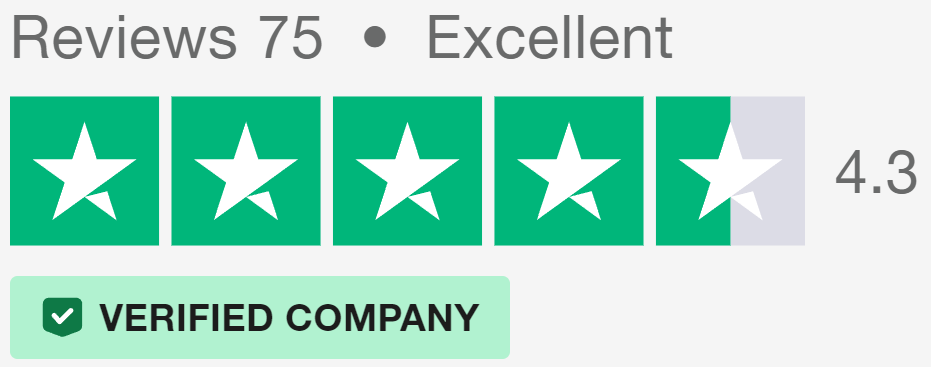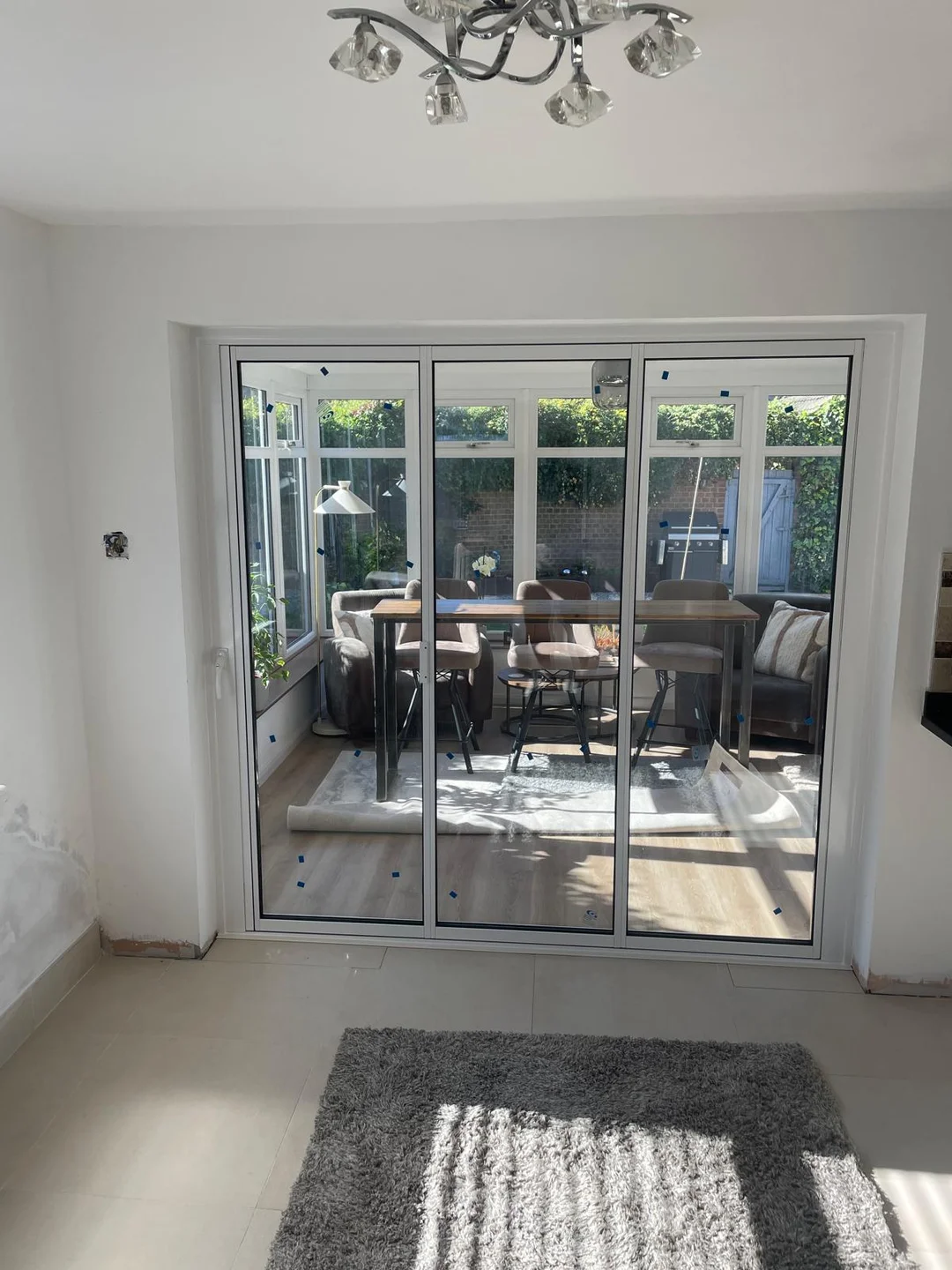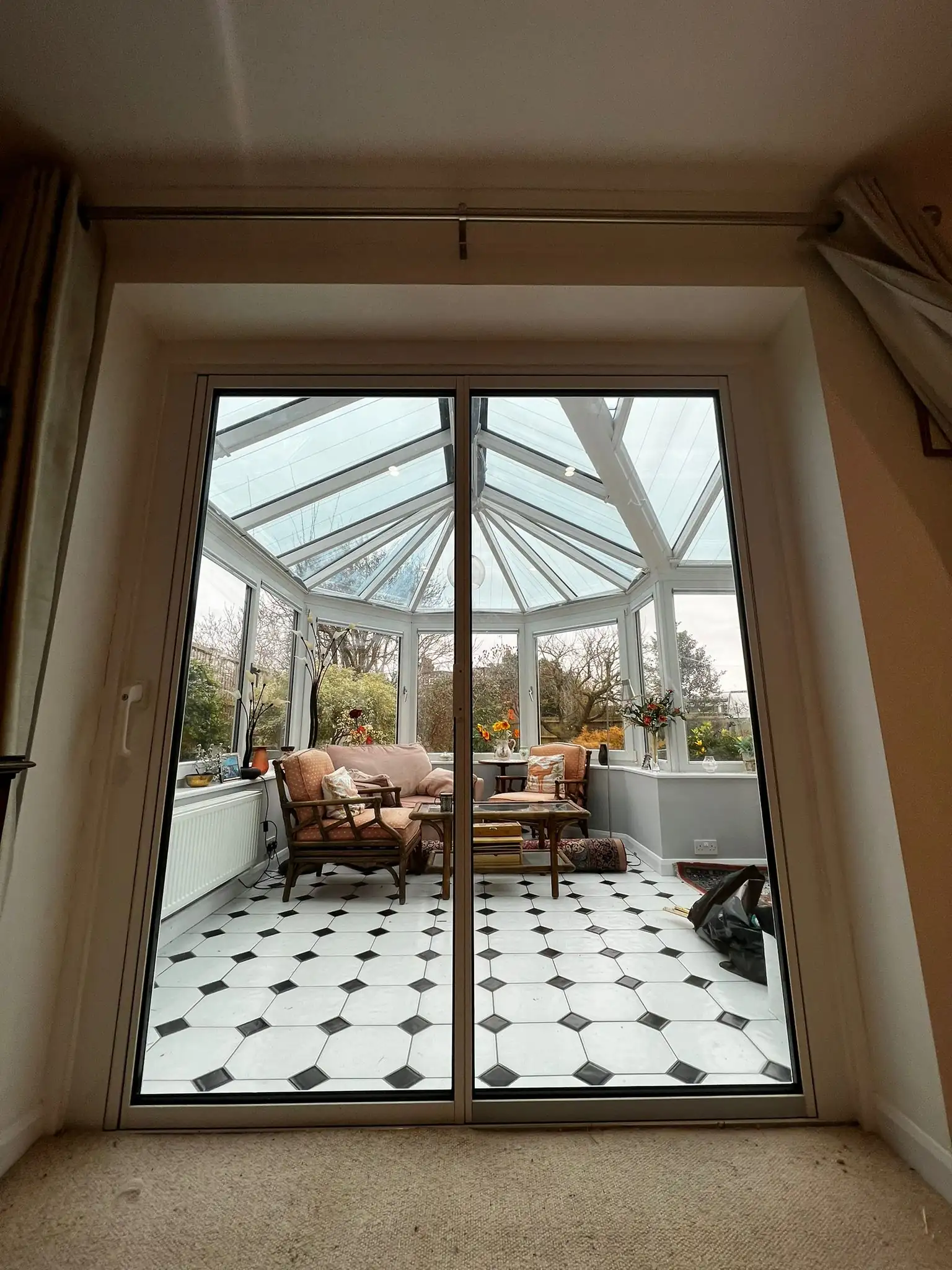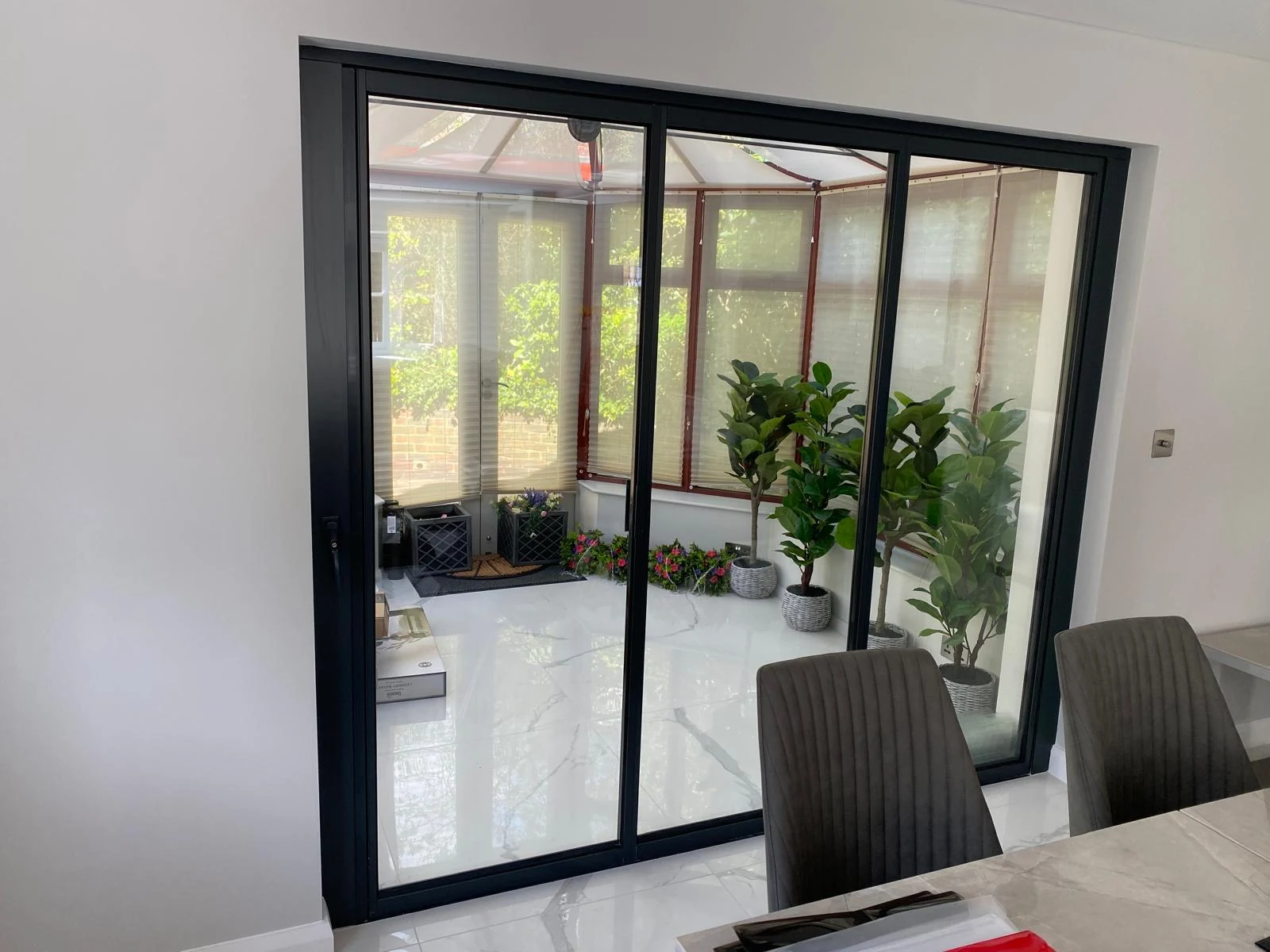Internal Aluminium Bifold Doors: Selection & Design Guide
Table of Contents

Space Planning with Internal Aluminium Bifold Doors
Internal aluminium bifold doors offer remarkable flexibility in dividing living spaces, with distinct advantages over conventional door systems. Each panel folds and stacks neatly against the wall, requiring minimal clearance space compared to hinged alternatives.
Sliding vs Bifold Door Movement Patterns
Bifold door systems move in a concertina pattern, with panels folding back against one another to create wide openings. Unlike sliding doors that need parallel tracks, internal bifolding doors stack perpendicular to the wall when opened. The panels’ movement pattern means you’ll need space at the sides for the stacked doors, but none in front of or behind the opening.
Movement mechanisms vary based on panel count and configuration. Single-direction internal aluminium bifold doors stack to one side, while centre-opening designs split and fold to both sides. The number of panels influences the stack depth as well as opening width—odd numbers allow for a single traffic door for everyday use.

Room Divider Applications
Modern homes often combine multiple functions within larger spaces, making internal aluminium room dividers invaluable. Placing bifolds between kitchen and dining areas creates distinct zones that can be opened fully for parties or closed to contain cooking odours. The slim frames of narrow folding doors preserve sightlines between spaces even when closed.
Glass panels maintain light flow throughout divided areas while reducing noise transfer. Partial-height internal folding doors can section off areas without blocking natural light from reaching interior spaces. Matching the frame finish to existing metalwork helps the doors blend naturally with your interior style.
Working with Small Spaces
Compact areas demand space division without compromising accessibility. Internal aluminium bifold doors excel in tight spots like utility rooms and home offices, where their folding mechanism takes up minimal space. The panels’ slim profile ensures doorways remain as wide as possible when open.
Making the Most out of Limited Space
Folding glass walls provide more usable space than traditional swing doors in restricted areas. The panels’ ability to stack flat against walls frees up valuable floor area, while their smooth operation makes them practical for daily use. Selecting the right configuration—whether that’s a single-direction fold or a split stack—helps you make the most of available space without limiting access.
Internal Aluminium Bifold Door Mechanisms
The operating system of internal aluminium bifold doors shapes how they’ll work in your space. Running gear quality, threshold design, and hardware choices determine smooth operation and long-term reliability.
Top-Hung vs Bottom-Rolling Systems
Top-hung internal aluminium bifold doors suspend the weight of the panels from the head track, reducing pressure on the floor threshold. A robust frame above the opening carries the load through precision-engineered rollers, allowing the doors to glide smoothly. The minimal floor track helps create level access between rooms.
Bottom-rolling systems distribute panel weight through the floor track using heavy-duty bearings. While this removes strain from the header beam—making them suitable for openings without substantial support above—the deeper floor track might need coordinating with different floor finishes. Internal bifolds running on bottom tracks need careful alignment during installation to prevent sticking or misalignment.
Roller Mechanisms and Bearings
High-quality stainless steel bearings ensure reliable movement year after year. The number and positioning of rollers varies by panel size—larger panels require additional support points to prevent sagging. Regular lubrication of moving parts keeps operation smooth and prevents wear on components.

Handle Styles and Hardware
Slim profile bifold doors demand carefully chosen handles that work with their folding action. Flush handles sit completely within the frame, preventing interference between panels when folded. Drop handles provide easy grip while maintaining a low profile, though they project slightly from the frame surface.
D-handles offer excellent grip and suit internal aluminium room dividers where regular opening and closing occurs. Magnetic catches hold panels together when closed, preventing unwanted movement. Lock options range from simple shoot bolts to multi-point systems for areas needing extra security.
Internal bi-folding doors need handles on leading and trailing edges for convenient operation. The main access panel often features a full-height handle, while intermediate panels use smaller pull handles or finger pulls. Matching hardware finishes to door frames creates visual harmony—brushed steel handles complement natural aluminium frames, while black hardware pairs well with darker finishes.
Door Threshold Options
Low-profile thresholds provide smooth transitions between spaces, proving particularly important in homes with children or mobility requirements. Recessing the track into the floor creates a virtually flat surface, though this requires planning during installation. Surface-mounted tracks rise slightly above floor level but offer simpler fitting.
Internal aluminium bifold doors can operate without a bottom track in some configurations, though this may reduce stability. Rebated thresholds offer a middle ground, with a slight lip that contains the running gear while maintaining easy passage. The choice between threshold styles depends on your flooring type and intended use—carpet requires different considerations than hard flooring.
As an alternative to french doors, trackless systems suit openings where a completely flush floor is essential. These systems rely entirely on top-hung mechanisms, requiring extra-sturdy header beams to support the increased load. While eliminating trip hazards, trackless designs may limit maximum panel sizes and configurations.
Bearing Load and Support Requirements
The structural integrity of your opening determines suitable door weights and configurations. Load-bearing calculations must account for the combined weight of frames, glass, and hardware. Steel reinforcement in the head beam might be necessary for wider openings or heavier panel specifications.
Proper support prevents operational issues like sticking or misalignment. Side jambs need secure fixing to maintain correct spacing between panels. Head beam deflection limits vary by system—some allow for building movement while others require rigid installation. Panel weight distribution through either top or bottom tracks influences the overall stability of the installation.
Technical Design Elements of Internal Aluminium Bifold Doors
The visual and practical qualities of internal aluminium bifold doors stem from careful design choices in frame profiles, glass specifications, and panel configurations. These elements work together to create doors that suit your space and requirements.
Frame Profiles and Sightlines
Frame thickness varies among manufacturers, with modern internal aluminium bifold doors featuring profiles as slim as 45mm. Thinner frames increase the glass-to-frame ratio, creating a lighter appearance when doors are closed. The structural strength of aluminium allows for these narrow profiles while maintaining stability.
Mullion width, where panels meet, plays a key part in the overall look. Some internal aluminium room dividers use stepped frames that reduce the visible frame width at panel junctions. Meeting stiles can be symmetrical or offset, changing how the doors appear when closed. Rebated edges help prevent light bleed between panels.
Profile Design Features
Thermal breaks, while standard in external doors, aren’t necessary for interior applications. This allows bifold door sets to use simpler frame designs with fewer components, reducing the overall frame width. Integrated brush seals between panels help reduce noise transfer without adding bulk to the profile.

Panel Sizes and Configurations
Panel width ratios need careful planning to ensure proper operation. Wider panels reduce the number of vertical mullions but increase individual panel weight. Typical widths range from 400mm to 1000mm, with height-to-width ratios determining stability. Door leaves wider than 900mm might need additional roller sets.
The number of panels changes how internal aluminium bifold doors stack when open. Three-panel configurations can fold to one side with a daily access door, while four-panel sets usually split in the middle. Odd numbers of panels allow for a single traffic door, useful in high-frequency openings where constant operation of all panels isn’t practical.
Glass Types for Different Needs
Glass selection balances privacy with light transmission. Clear toughened glass suits areas where visibility takes priority, while frosted or patterned options provide screening without blocking light completely. Acoustic laminated glass reduces sound transmission between spaces—particularly useful for home office setups or media rooms.
Privacy glass comes in various finishes, from full obscurity to partial screening. Sandblasted glass maintains consistent opacity, while decorative patterns can create visual interest. Some glass types feature variable opacity, appearing clear from straight on but becoming more opaque when viewed at angles.
Internal bifold doors often use single-glazed panels since thermal insulation isn’t required. This reduces overall door weight and frame depth compared to double-glazed units. Glass thickness depends on panel size and building regulations—larger panels need thicker glass to maintain structural integrity.
Acoustic Performance
Sound insulation needs vary by room usage. Standard internal aluminium bifold doors provide basic noise reduction, while specialized acoustic glass and seals can improve sound blocking. Double-rebated frames and acoustic brushes help reduce sound transfer through panel joints.
The relationship between glass thickness and sound reduction isn’t linear: laminated glass with special interlayers often outperforms thicker single panes. Multiple layers with varying thicknesses break up sound waves more effectively than single thick panels. Meeting stiles and frame joints need proper sealing to maintain acoustic performance across the entire door set.
Finishes for Internal Aluminium Bifold Doors
Internal aluminium bifold doors come in a range of surface treatments that combine durability with style. The finish choice shapes the overall appearance while protecting the metal underneath from daily wear.
Powder Coating vs Anodising
Powder coated internal aluminium bifold doors offer extensive colour options and excellent scratch resistance. The coating process involves electrostatically applying dry powder to the aluminium, then heating it to form a hard skin. This creates a uniform, chip-resistant surface that maintains its appearance over time.
Anodising creates a metallic finish by chemically altering the aluminium’s surface layer. The process produces a harder surface than powder coating, making it particularly resistant to scratches and wear. Natural silver anodised finishes highlight aluminium’s inherent metallic qualities, while coloured anodising adds subtle tints to the metal’s natural sheen.
Surface Preparation and Application
Raw aluminium needs careful preparation before finishing. Surface imperfections show through the final coating, so thorough cleaning and pre-treatment are essential. Multi-stage preparation includes degreasing, etching, and conversion coating to ensure proper adhesion of the final finish.
Internal aluminium room dividers in high-traffic areas benefit from textured powder coating, which helps hide minor scratches and fingerprints. The texture depth varies from fine grain to heavy stipple, changing how light plays across the surface. Metallic powder coatings contain small particles that create subtle sparkle effects under different lighting conditions.

Metallic and Special Effects
Grey aluminium bifold doors remain consistently popular, offering subtle sophistication that works with many interior styles. The shade range spans from light silver to deep charcoal, with warm and cool undertones to match different colour schemes. Metallic variants add depth through light-catching particles in the finish.
Black internal bifold doors make strong architectural statements, especially in industrial-inspired interiors. Matt black powder coating reduces reflection and fingerprint visibility, while gloss finishes create contrasts with surrounding surfaces. Special textured blacks combine deep colour with practical benefits like improved grip and scratch resistance.
Finish Durability and Maintenance
Each finish type needs specific care to maintain its appearance. Powder coating resists most household cleaners but can scratch if cleaned with abrasive materials. Anodised surfaces handle aggressive cleaning better but may show wear patterns on frequently touched areas over time.
The lifespan of different finishes varies by environment and usage. High-traffic areas might show wear on powder coated surfaces where hands regularly touch the frames. Anodised finishes typically maintain their appearance longer but offer fewer colour options than powder coating.
Custom Finishes and Special Applications
Modern finishing techniques allow for unique effects beyond standard colours. Dual-finish options combine different textures or colours on interior and exterior frame faces. Wood-effect powder coatings replicate timber grains while providing aluminium’s structural advantages.
The finish choice influences more than aesthetics; it can improve grip on handles and reduce maintenance needs in busy areas. Some specialist coatings include antimicrobial properties, particularly useful in home office or multi-generational living spaces where hygiene takes priority.
Internal aluminium bifold doors in period properties might require specific finishes to match existing architectural features. Custom colour matching helps integrate new doors with established colour schemes, while speciality finishes can replicate the appearance of traditional materials like bronze or brass.
Styling Internal Aluminium Bifold Doors
Internal aluminium bifold doors add architectural interest while dividing spaces in modern homes. The clean lines and slim frames work well across various interior styles, from raw industrial spaces to refined contemporary designs.
Industrial and Contemporary Designs
Raw metal finishes and exposed hardware give internal aluminium bifold doors an authentic industrial appearance. Factory-style glazing bars can divide glass panels into smaller sections, referencing traditional warehouse windows. Dark grey or black frames contrast beautifully with bare brick walls and polished concrete floors.
Internal aluminium room dividers paired with steel furniture and vintage lighting create cohesive industrial schemes. Large glass panels framed in dark metal complement exposed ceiling beams and ductwork. The combination of glass and metal brings sophistication to utilitarian spaces without losing their edge.
Minimalist Integration
Clean lines and simple hardware allow internal aluminium bifold doors to disappear into minimalist interiors. White or light grey frames reduce visual weight, while flush handles maintain unbroken surfaces. The slender profiles of modern door systems support the pared-back aesthetic that defines minimalist design.
Glass panels divided by slim aluminium frames create geometric patterns that add subtle detail to simple spaces. When opened, the stacked panels form neat blocks that align with surrounding architectural elements. Concealed running gear maintains visual simplicity, letting the pure forms of the doors stand out.
Frame and Hardware Selection
Hidden hinges and recessed handles reduce visual clutter in minimalist schemes. Matching frame colours to walls helps doors merge with their surroundings when closed. Track systems installed within ceiling voids eliminate visible head rails, supporting the less-is-more principle.
Luxe Interior Schemes
Premium finishes turn internal aluminium bifold doors into striking design features. Bronze anodised frames add warmth and sophistication, while champagne-coloured metal introduces subtle glamour. These rich metallic finishes catch light differently throughout the day, creating ever-changing reflections.
Textured glass panels provide privacy without sacrificing style. Fluted or reeded glass adds visual interest while obscuring views, perfect for separating living spaces from private areas. The interplay between metal frames and textured glass creates depth and intrigue in luxury interiors.
Zoning Open Spaces
Modern living demands flexible spaces that adapt to changing needs. Internal aluminium bifold doors separate work areas from living zones without building permanent walls. Home offices tucked behind glass panels stay connected to the main space while providing acoustic and visual separation when needed.
The positioning of dividing doors shapes how spaces interact. Glass panels maintain sight lines through divided rooms, making spaces feel larger and more connected. Strategic placement near natural light sources helps illuminate interior zones, while privacy glass options let you control views between areas.
Kitchen and dining spaces benefit from internal aluminium bifold doors that contain cooking odours while maintaining social connection. The ability to close off kitchen areas during formal entertaining proves invaluable, while full-width openings create expansive entertaining spaces when desired.
Furniture placement near bifold doors requires careful planning. When open, stacked panels need clearance space, influencing the layout of seating areas and walkways. The direction of door operation—whether panels stack to one or two sides—guides furniture arrangements in adjacent spaces.
Visual continuity between divided spaces strengthens the overall design. Coordinating floor finishes across thresholds creates flow between areas, while complementary wall treatments tie spaces together. The metal frames of internal aluminium bifold doors can pick up finishes from lighting fixtures or furniture, creating subtle connections throughout the space.
We’d Love to Help You
Vision Glass Doors is a designer, manufacturer, and installer of premium door systems. We are a family run business with over 20 years’ experience and 5,000 installations across the UK.
Our leading range of door systems include Ultra Slim – Slide and Turn Doors, Slimline Sliding Patio Doors and Frameless Glass Doors. Suitable for various internal and external applications, they are applicable to residential and commercial projects.
Click Quick Quote Online for a free quotation within 24 hours. Alternatively, call or email us on 01582 492730 or at info@visionglassdoors.co.uk.

